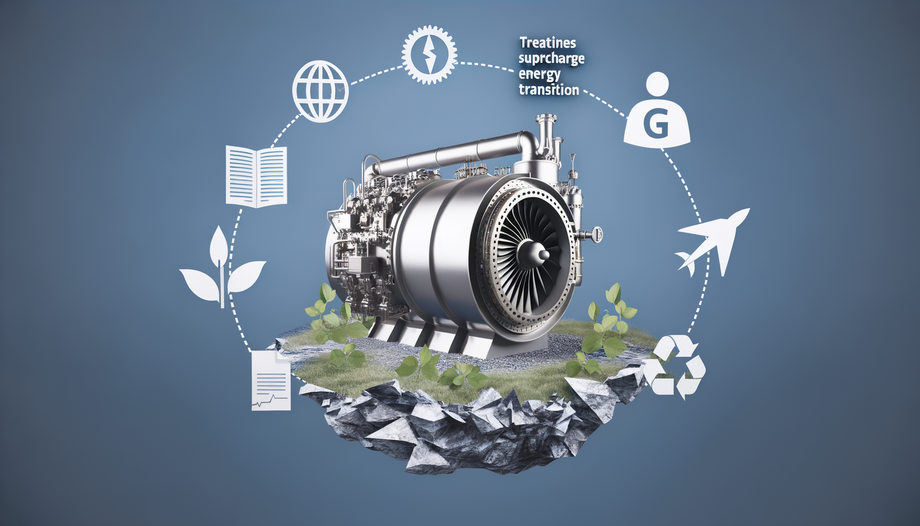Pioneering the Hydrogen Frontier
As the global community increasingly prioritizes sustainable energy transition, hydrogen has emerged as a pivotal component of the energy mix. Indeed, hydrogen-based technologies, especially hydrogen-powered gas turbines, herald a groundbreaking shift from traditional fossil fuels to cleaner alternatives. Government incentives and policies play a cardinal role in accelerating this transition. But why is this essential, and what impacts do these policies have in the realm of power generation? This article unravels the intricacies of governmental interventions in championing hydrogen adoption in the energy sector.
The Hydrogen Promise
Hydrogen is hailed as a game-changer for power generation because of its versatility, abundance, and zero carbon emissions when used as a fuel in power turbines. Its promises extend to reduced dependency on coal and natural gas, alongside diminishing overall greenhouse gas emissions. Given the urgent climate agenda, embracing hydrogen seems an obvious choice. However, transitioning an entire sector requires infrastructure, research and development, and policy support.
Government's Role in Skewing the Odds
Governments globally are recognizing the importance of hydrogen as a clean energy solution and are investing heavily in creating conducive ecosystems for its growth. Let's explore how different nations are paving the way:
United States
The United States has embarked on an ambitious "Hydrogen Shot" initiative under the Department of Energy, aimed at reducing the cost of clean hydrogen by 80% over the next decade. Coupled with tax credits for producers and enhancements to existing infrastructure, the federal support aims to catalyze significant industry growth.
European Union
Central to the EU's "European Green Deal" is the EU Hydrogen Strategy. This robust plan seeks to integrate hydrogen into the energy grid, with provisions for billions in subsidies for renewable hydrogen projects. Additionally, Europe promotes cross-border projects to ensure hydrogen's transnational adoption.
Japan
Japan is positioned as a global leader in the hydrogen economy, notably with its "Basic Hydrogen Strategy." This policy focuses on cost reductions, large-scale adoption, and international partnerships. Notably, Japan is pioneering hydrogen liquefaction plants and expanding its hydrogen transport networks.
China
China is doubling down on hydrogen during its 14th Five-Year Plan, which underscores significant investments in electrolyzer technologies and hydrogen refueling stations. Supportive government policies are bolstered by China's broader goals of achieving carbon neutrality.
Australia
Australia’s "National Hydrogen Strategy" envisions the country as a top global player by 2030, emphasizing export capabilities. This includes substantial investments in hydrogen research and the implementation of hydrogen hubs.
Tailwinds and Headwinds for Hydrogen-based Technologies
Incentives Driving Change
- Financial Support: Beyond tax breaks and subsidies, grants for research, pilot projects, and production facilities are crucial enablers.
- Fostering Innovation: Investments in innovation foster collaborations between public institutions and private enterprises, facilitating breakthroughs in technology and methods.
- Regulatory Frameworks: Establishing standards that ensure safety and encourage hydrogen blending into existing systems emboldens growth.
The Challenges We Face
- Infrastructure Needs: Building and expanding distribution networks, storage capacity, and refueling stations are colossal undertakings.
- Market Volatility: Economic instabilities can impact government support and private sector investments.
- Public Perception: Educating the public on hydrogen safety and benefits to counteract skepticism is imperative.
The Road Ahead
The interplay of government policies and incentives is a primary catalyst for hydrogen’s journey from niche application to mainstream energy pillar. As nation-states continue to underpin the hydrogen revolution with regulatory foresight and financial support, the world may soon witness an energy fleet run by hydrogen gas turbines scaling new heights.
Yet this metamorphosis requires sustained effort, introspection, and innovation—from policymakers, industry players, and society alike. As these pieces come together, hydrogen promises a future where energy consumption and environmental stewardship go hand in hand.
Conclusion
Hydrogen-based technologies have the potential to redefine global power generation, but they rely heavily on cohesive and forward-thinking government policies. As nations race to embrace this cleaner alternative, the blueprint of hydrogen policy can reshape energy landscapes, eclipse traditional fuel dependencies, and unlock an era of sustainable development.
In unleashing hydrogen's power, intentional collaboration, robust dialogue, and international cooperation will be paramount, not just for technological advancement, but for crafting a world where sustainable energy is an omnipresent reality.

